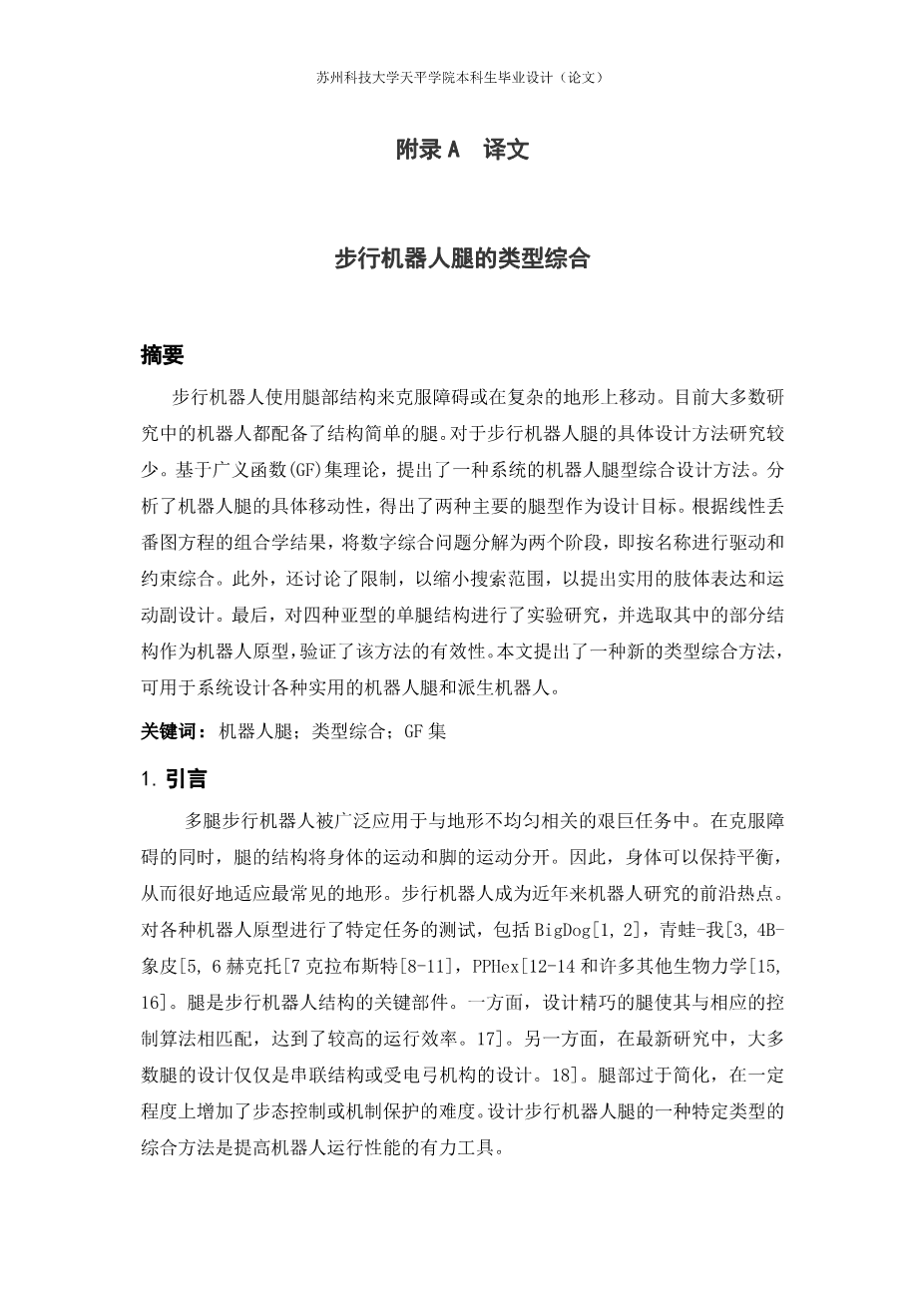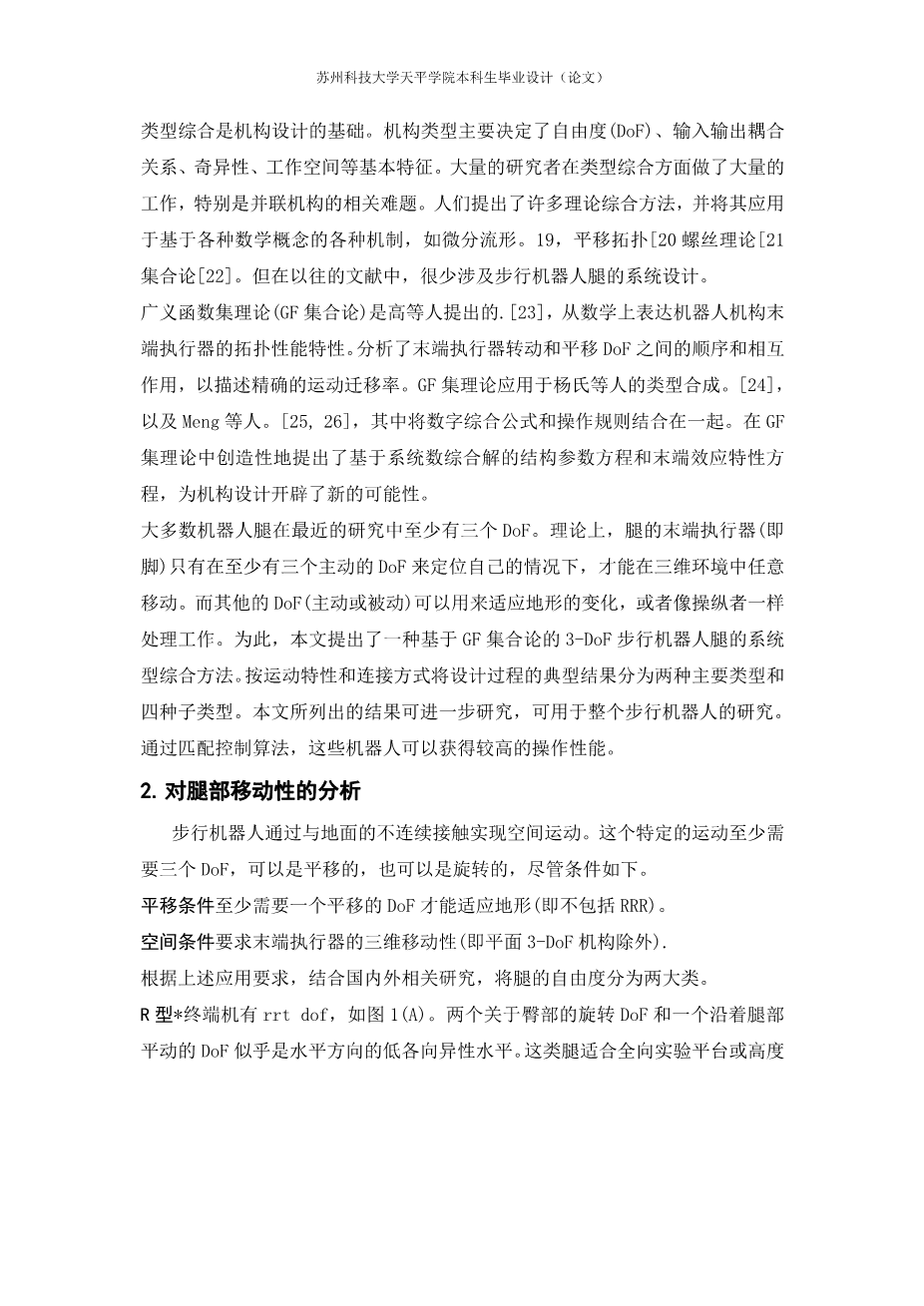Type Synthesis of Walking Robot Legs
Abstract
Walking robots use leg structures to overcome obstacles or move on complicated terrains. Most robots of current researches are equipped with legs of simple structure. The specifc design method of walking robot legs is seldom studied. Based on the generalized-function (GF) set theory, a systematic type synthesis process of designing robot legs is introduced. The specifc mobility of robot legs is analyzed to obtain two main leg types as the goal of design. Number synthesis problem is decomposed into two stages, actuation and constraint synthesis by name, corresponding to the combinatorics results of linear Diophantine equations. Additional restrictions are discussed to narrow the search range to propose practical limb expressions and kinematic-pair designs. Finally, all the ffty-one leg structures of four subtypes are carried out, some of which are chosen to make up robot prototypes, demonstrating the validity of the method. This paper proposed a novel type synthesis methodology, which could be used to systematically design various practical robot legs and the derived robots.
Keywords:Robot leg; Type synthesis;GF set
- Introduction
Walking robots with multiple legs have been wildly applied to tough missions associated with uneven terrains. It is the leg structure that separates the body locomotion from the feet motion while overcoming obstacles. As a result, the body could maintain balance, leading to a good adaption of most common terrains. Walking robots become the hot spots recently at the leading edge of robot research. Various robot prototypes were tested with specific tasks, including BigDog [1, 2], FROG-I [3, 4], B-elepht [5, 6], Hector [7], Crabster [8-11], PPHex [12-14] and many other biomechanics [15, 16]. Legs are the key parts of the walking robot structure. On the one hand, exquisitely-designed legs make it possible to match the corresponding control algorithm to achieve high operating efficiency [17]. On the other hand, most of the leg designs in up-to-date researches are simply of serial structure or of pantograph mechanism [18]. The oversimplified type of legs, to a certain extent, increases difficulty in gait controlling or mechanism protecting. A specific type synthesis method of designing walking robot legs is a powerful tool for improving the operating performance.Type synthesis is fundamental to mechanism design. The types of the mechanisms primarily determine several basic characters, such as the degree of freedom (DoF), coupling relation between input and output, singularity, workspace. A large number of researchers have done tremendous work on type synthesis, especially the relative difficult topics on parallel mechanisms. Many theoretical synthesis methods have been proposed and applied on numerous mechanisms basic on various mathematical concepts, such as differential manifolds [19], translational topology [20], screw theory [21], set theory [22]. But in previous literatures, few of them has been involved in systematic design of walking robot legs.
The theory of generalized-function sets (GF set theory) was proposed by Gao et al. [23], to mathematically express the topological-performance property of the end-effectors of robotic mechanisms. The sequence and interaction effects between rotational and translational DoF of the end-effector were analyzed to describe the exact kinematic mobility. GF set theory was applied in type synthesis by Yang et al. [24], and Meng et al. [25, 26], where number synthesis formula and rules of operation were integrated. The systematic number synthesis solution, which led to the equation of structure parameters and end-effector characteristics, was creatively proposed in GF set theory to open up new possibilities for mechanism design.
Most of the robot legs in recent researches have no less than three DoF. Theoretically, the legs end-effector (i.e., the foot) is capable of moving arbitrarily in 3-D environment only if it has, at least, three active DoF to locate itself. While other DoF (active or passive) could be used to adapt to changing terrains or handle jobs like a manipulator. For this reason, this paper uses a systematic type synthesis method for 3-DoF walking robot legs based on GF set theory. The typical results of the design process are classified into two main types and four subtypes by motion characteristics and connection types. The listed results in this paper could be further studied to be combined into whole walking robots. With matched control algorithm, these robots could achieve high operating performance. The main contributions of the paper are as follows.
(1) Two main types of robot legs are analyzed and proposed.
(2) The equivalent number-synthesis equations of actuations and constraints are analyzed and solved by corresponding solutions in combinatorial mathematics.
(3) Various restrictions are set in every stage of design process to realize a systematic type-synthesis method based on GF set theory, which has never been referred to in previous literatures.
(4) Deign results are listed by four subtypes, several examples of which are compared with available prototypes to demonstrate the validity of the method.
This paper is organized as follows. Section 2 sets the goals of synthesis, based on the analyses of the two main robot leg types. Section 3 provides the solutions of the number-synthesis equations of actuations and constraints, which determine the GF expressions of limbs in Section 4. Section 5 raises some recommended limb designs of kinematic pairs. Typical design results of different limbs are illustrated in Section 6. Section 7 gives the conclusions.
2. Analyses of the Leg Mobility
Walking robots realize space locomotion via discontinuous contact with ground. This specific motion requires at least three DoF which could be either translational or rotati
剩余内容已隐藏,支付完成后下载完整资料
英语译文共 9 页,剩余内容已隐藏,支付完成后下载完整资料
资料编号:[608203],资料为PDF文档或Word文档,PDF文档可免费转换为Word
课题毕业论文、外文翻译、任务书、文献综述、开题报告、程序设计、图纸设计等资料可联系客服协助查找。




